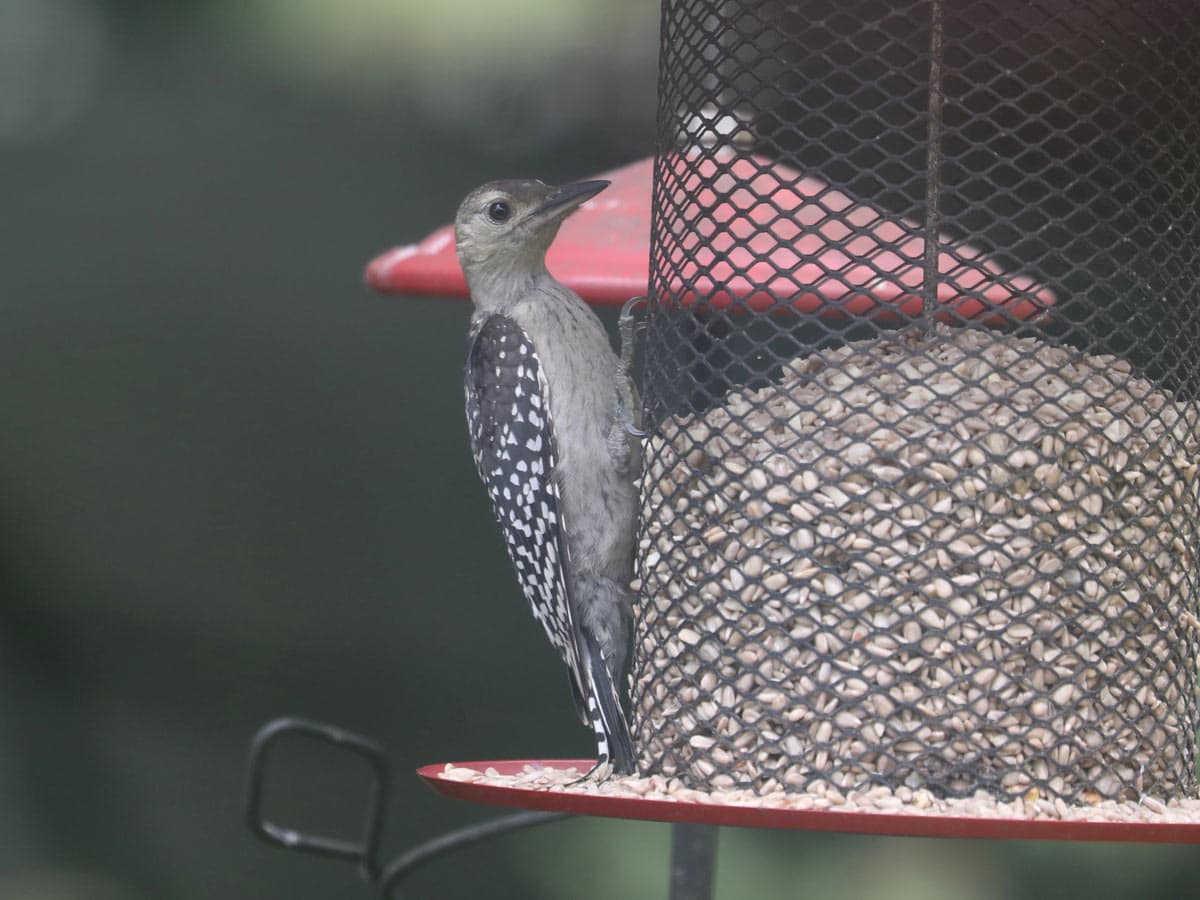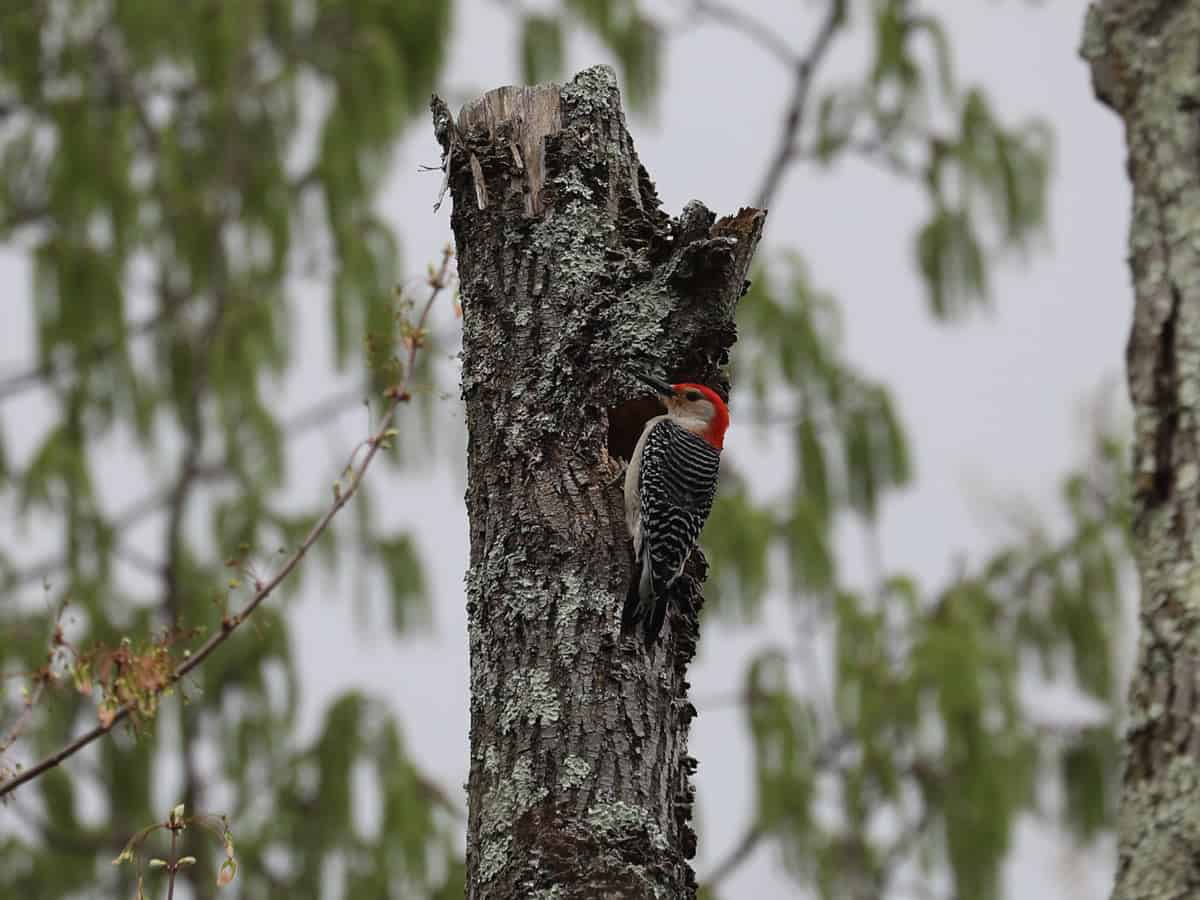Red-bellied Woodpeckers
I’ve been enjoying seeing a fledgling Red-bellied Woodpecker visiting my feeders during the last two weeks. You can recognize it as a fledgling by the complete lack of red feathers on its head. Adult females have a bright red nape (the back of the head). Adult males have that red nape, plus red across the top of the head to the base of the bill.
Like most other woodpeckers in Pennsylvania, Red-bellied Woodpeckers are mostly non-migratory. You can see them year-round in your yard, and there’s a good chance the woodpecker you see in June is the same one visiting your feeders in December. They nest in cavities, either in a dead or dying tree, or in a large bird house. In fact, the cavities created by Red-bellied Woodpeckers can be important nesting and roosting sites for many other animals, including titmice, chickadees, bluebirds, and small mammals like mice and squirrels.
Although they have a lot in common with other woodpeckers, Red-bellied Woodpeckers show a few differences that make them stand out. For example, they spend very little time drilling into wood for insect prey. They’re more likely to spend their time looking for seeds, acorns, fruit, or insects that are not hiding inside a tree. This difference is noticeable at bird feeders as well. Most of your woodpeckers will focus on your suet feeders when they visit your yard. Red-bellied Woodpeckers are far more likely to visit your seed feeders.
Red-bellied Woodpeckers
I’ve been enjoying seeing a fledgling Red-bellied Woodpecker visiting my feeders during the last two weeks. You can recognize it as a fledgling by the complete lack of red feathers on its head. Adult females have a bright red nape (the back of the head). Adult males have that red nape, plus red across the top of the head to the base of the bill.
Like most other woodpeckers in Pennsylvania, Red-bellied Woodpeckers are mostly non-migratory. You can see them year-round in your yard, and there’s a good chance the woodpecker you see in June is the same one visiting your feeders in December. They nest in cavities, either in a dead or dying tree, or in a large bird house. In fact, the cavities created by Red-bellied Woodpeckers can be important nesting and roosting sites for many other animals, including titmice, chickadees, bluebirds, and small mammals like mice and squirrels.
Although they have a lot in common with other woodpeckers, Red-bellied Woodpeckers show a few differences that make them stand out. For example, they spend very little time drilling into wood for insect prey. They’re more likely to spend their time looking for seeds, acorns, fruit, or insects that are not hiding inside a tree. This difference is noticeable at bird feeders as well. Most of your woodpeckers will focus on your suet feeders when they visit your yard. Red-bellied Woodpeckers are far more likely to visit your seed feeders.
About The Author
Dan Hinnebusch is the Ornithologist for Wild Birds Unlimited. Click to learn more.





